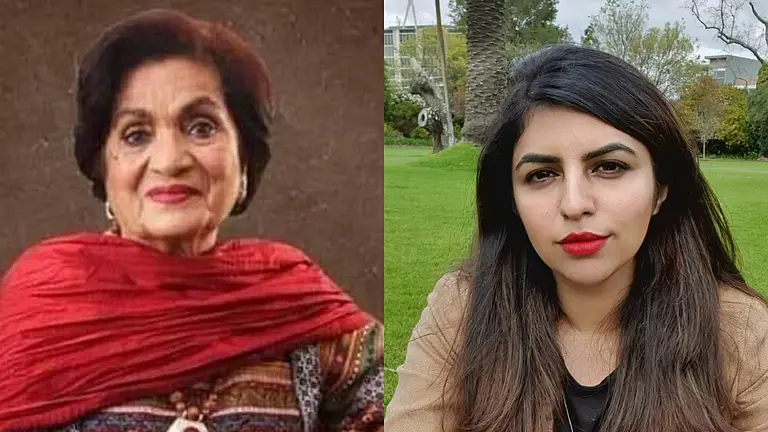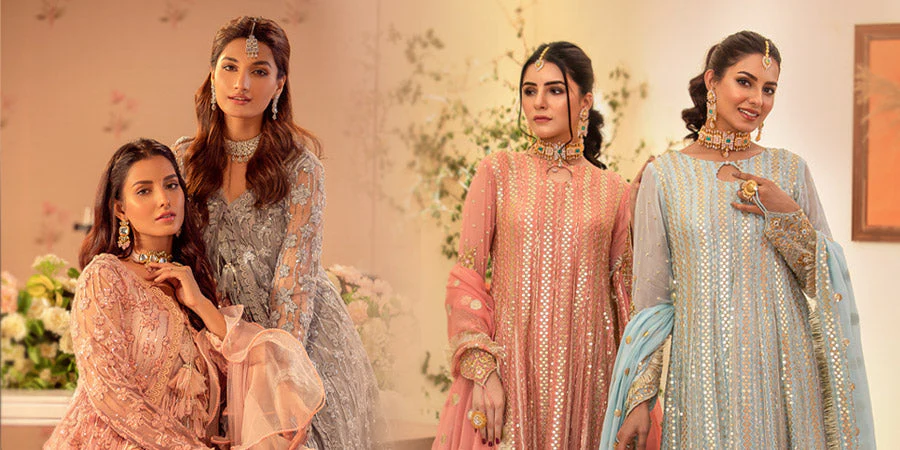The comparison between Indian vs Pakistani women reveals fascinating cultural, social, and historical contrasts shaped by shared roots yet divergent national identities. Both countries, once part of the same civilization, nurture women who embody resilience, beauty, intelligence, and strength.
From traditions to education, from lifestyle to empowerment, Indian and Pakistani women continue to redefine their roles in modern society.
Understanding their similarities and differences gives us insight into how history, culture, religion, and modernization have influenced their lives today.
Historical and Cultural Background
Indian and Pakistani women share a common heritage that dates back to centuries before the 1947 partition. Yet, post-independence, the trajectory of women’s development in both countries evolved differently.
In India, the influence of Hinduism, diverse regional cultures, and political progress paved the way for women’s participation in almost every sector. Women like Indira Gandhi, Kalpana Chawla, and Priyanka Chopra symbolize power, intellect, and ambition.
In Pakistan, the cultural identity is deeply rooted in Islamic traditions. Despite conservative challenges, Pakistani women such as Benazir Bhutto, Malala Yousafzai, and Sharmeen Obaid-Chinoy have made global impacts through leadership, education, and art.
Culturally, both nations celebrate womanhood differently. Indian festivals like Navratri and Karva Chauth highlight women’s devotion and strength, while Pakistan celebrates women’s contributions through Aurat March and Women’s Day rallies that emphasize equality and rights.
Education and Career Growth
Education has been a defining factor separating the opportunities of Indian vs Pakistani women.
In India, women’s literacy rate has seen a steady climb, reaching over 70% in 2024. With more universities promoting equal enrollment, Indian women have excelled in engineering, medicine, technology, and business. Figures like Kiran Bedi and Falguni Nayar showcase how education fuels empowerment.
Pakistan, on the other hand, has faced more barriers due to rural inequality and traditional norms. However, significant improvements have emerged. Programs led by Malala Fund and government-backed scholarships have enabled more women to pursue education. Today, women in cities like Lahore, Islamabad, and Karachi are entering professions like law, finance, and media with growing confidence.
Despite progress, challenges remain. Rural women in both nations still struggle with access to quality education. Yet, their determination to learn continues to inspire new generations.
Fashion, Beauty, and Lifestyle

When it comes to fashion, Indian vs Pakistani women both showcase rich traditions and modern creativity.
Indian women embrace color, diversity, and experimentation. The saree, salwar kameez, and lehenga remain iconic, but western influences are visible in workplaces and urban areas. The Indian fashion industry—represented by designers like Sabyasachi, Manish Malhotra, and Ritu Kumar—has global recognition. Bollywood has played a massive role in shaping modern fashion trends.
Pakistani women, meanwhile, are admired for elegance and modesty. Traditional attire such as shalwar kameez and dupatta remain timeless, blending Islamic modesty with sophistication.
Designers like Maria B, Sana Safinaz, and Elan bring Pakistan’s fashion identity to the international stage.
In lifestyle, Indian women often balance modern urban living with traditional family roles. Pakistani women, too, maintain similar values—prioritizing family, faith, and cultural pride while adapting to modern trends.
Both societies now witness women owning businesses, traveling independently, and influencing social media trends.
Family and Social Roles
Family remains a cornerstone of life for Indian and Pakistani women. Yet, their social roles are evolving rapidly.
In India, traditional gender expectations once confined women to domestic roles. Today, that narrative is changing. Women are key decision-makers, earning members, and household leaders. In urban settings, joint family systems are giving way to nuclear families, offering more independence to women.
Pakistani women also share deep respect for family values and religion. However, social expectations remain more conservative in some regions. Despite this, urban women are breaking stereotypes—managing businesses, working in offices, and taking leadership roles in NGOs and politics.
Both countries now see a cultural shift where women seek a balance between tradition and self-expression. Whether homemakers or professionals, they continue to redefine what it means to be a modern South Asian woman.
Women’s Empowerment and Rights
Empowerment is one of the most powerful comparisons between Indian vs Pakistani women.
In India, constitutional rights ensure gender equality. Movements like #MeTooIndia and the Women’s Reservation Bill have strengthened women’s voices in public and political spaces. Legal reforms addressing domestic violence, workplace harassment, and equal pay have encouraged more women to speak up.
Pakistan, too, has witnessed a growing wave of female activism. The Aurat March, women-led media campaigns, and the rise of female journalists have challenged patriarchal norms. Although gender gaps remain in rural regions, urban women are increasingly taking leadership positions.
Both countries still struggle with issues like wage disparity, safety, and representation. But the determination to fight for equality shows how South Asian women are shaping their futures.
Representation in Media and Politics
In both nations, media plays a vital role in shaping the image of women.
Indian women dominate global entertainment through Bollywood and beyond. Actresses like Deepika Padukone, Priyanka Chopra, and Alia Bhatt are international icons. Women are also excelling as directors, producers, and news anchors, redefining media narratives.
Pakistani women, through dramas and films, project strength and grace. Stars like Mahira Khan, Sajal Aly, and Mehwish Hayat represent modern Pakistani identity—bold yet grounded in tradition. Pakistani media often focuses on women’s struggles and victories, inspiring millions.
In politics, India boasts figures such as Sushma Swaraj, Sonia Gandhi, and Mamata Banerjee, who have played major national roles. Pakistan remains proud of Benazir Bhutto, the first woman to lead a Muslim-majority country. Both nations have women active in parliament, working to create policies that support female welfare and rights.
Religious and Moral Perspectives

Religion continues to influence women’s lifestyles deeply.
In India, Hindu, Muslim, Christian, and Sikh women coexist with diverse customs. Festivals, spiritual beliefs, and family traditions shape their daily routines. This diversity encourages open-mindedness and cultural adaptability.
Pakistani women, guided primarily by Islamic principles, practice modesty, faith, and strong moral values. Islam emphasizes respect, education, and dignity for women, and many women in Pakistan use faith as a foundation for empowerment.
While both societies have religious frameworks, modern interpretations encourage women to balance faith and freedom—embracing education, careers, and self-reliance.
Global Recognition and Influence
Globally, Indian vs Pakistani women are making their mark.
Indian women lead multinational companies, win global awards, and represent India in technology, space, and arts. Icons like Sundar Pichai’s team leads, Indra Nooyi, and Mithali Raj demonstrate Indian women’s influence across industries.
Pakistani women have equally remarkable achievements. Malala Yousafzai, a Nobel laureate, represents courage and education advocacy. Artists like Sharmeen Obaid-Chinoy bring Pakistan’s narratives to the world through cinema. Pakistani women entrepreneurs are expanding into global fashion, e-commerce, and tech industries.
Both countries’ women have become ambassadors of culture and progress, inspiring millions worldwide.
Challenges and Progress
Despite advancements, challenges persist in both nations.
In India, issues such as gender-based violence, wage inequality, and rural illiteracy remain areas of concern. However, government schemes like Beti Bachao Beti Padhao and rising female representation in STEM fields are promising signs.
In Pakistan, societal expectations, early marriages, and rural poverty continue to hinder growth. Yet, non-profits and education drives are opening new doors. The rise of female entrepreneurs and digital influencers reflects a new era of change.
Both nations are experiencing transformation, where women are no longer passive observers but active creators of their destinies.
Future Outlook

The future of Indian vs Pakistani women lies in unity, education, and empowerment. With globalization bridging cultural divides, women from both sides are increasingly collaborating in fashion, media, and technology.
Cross-border solidarity through online communities and NGOs continues to promote women’s rights and equality. The shared goal is clear—to create a South Asia where women are not judged by nationality but celebrated for strength, creativity, and leadership.
READ MORE: 10 Fashion Trends You Need To Know In 2025
As more women step into leadership, politics, and innovation, the subcontinent moves closer to equality. The comparison between Indian and Pakistani women is not about competition—it’s about growth, identity, and the collective progress of South Asian womanhood.
FAQs — Indian vs Pakistani Women
What are the main differences between Indian and Pakistani women?
Indian women often embrace diverse cultures, bold fashion, and western influences, while Pakistani women reflect modesty, elegance, and Islamic traditions. Both are educated, career-driven, and family-oriented, representing strength in unique ways.
How do beauty standards differ between Indian and Pakistani women?
Indian beauty is defined by vibrant makeup, colorful attire, and glamour, while Pakistani beauty highlights simplicity, natural looks, and modest style. Yet, both now embrace individuality and self-confidence over traditional standards.
Are Indian women more empowered than Pakistani women?
Both nations have made progress in women’s empowerment, though India has a higher percentage of women in politics and corporate sectors. Pakistan’s Aurat March and global icons like Malala Yousafzai show rising awareness and activism.
How do Indian vs Pakistani women balance family and careers?
Indian and Pakistani women balance work and family through strong cultural values. Urban women in both countries manage jobs, homes, and children with remarkable dedication, challenging gender roles while preserving family harmony.
What connects Indian and Pakistani women despite national differences?
Shared history, language, traditions, and values connect Indian vs Pakistani women. They both cherish family, modesty, and education, proving that empathy and strength transcend political and geographical boundaries.
Final Thought
The story of Indian vs Pakistani women is one of resilience, diversity, and transformation. Though separated by borders, they share a powerful legacy rooted in courage and determination.
Indian women lead industries, arts, and politics with bold ambition. Pakistani women rise in education, activism, and creative innovation with grace and purpose. Together, they redefine the image of South Asian women—modern yet traditional, strong yet compassionate.
Their journey is far from over, but it’s one filled with promise, pride, and empowerment.






